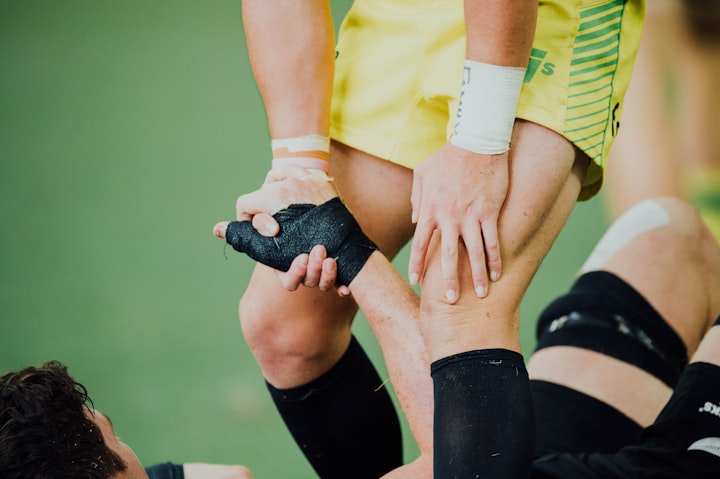Keep your bones and joints fit
Tips for correct posture and movement in everyday life

Getting out of bed, climbing the stairs, carrying the groceries into the house, going for a jog in the evening - everyday life is a real tough job for our joints. So it's no wonder that more and more people are suffering from joint pain. The heavily stressed joints such as hips and knees are particularly affected. If the symptoms are severe, going to the orthopedist is often unavoidable. But how do we manage to strengthen our joints and reduce wear and tear on the cartilage in everyday life? The good news: With a conscious posture and correct movement sequences, we can achieve a lot and keep our joints fit.
Take care of your joint health
Speaking of exercise: This plays an important role in joint health. Of course, when our knee hurts like hell, we would like to crawl into bed. Unfortunately, this is exactly the wrong way. The solution: With sufficient exercise and gentle sport, you can alleviate the symptoms and prevent joint pain.
It is important to choose suitable sports. Which are they? All those who do not put unnecessary strain on the joints. Swimming, cycling, and walking are ideal. Extreme jogging is rather counterproductive. Better: aqua fitness. The water carries your body and thus relieves your joints. Moderate strength training is also helpful.
Regular exercise is good for your joints
But why does exercise keep our joints fit? By doing physical activity, you promote blood circulation and the supply of nutrients to your joints. The cartilage itself is not supplied with blood but is supplied with nutrients by the viscous synovial fluid. Alternating loading and unloading of the joint is necessary so that the cartilage can absorb the synovial fluid. This explains why regular exercise contributes to joint health. With every step you counteract the cartilage degradation, i.e. arthrosis.
At the same time, exercising strengthens your muscles. A trained musculature can carry your bones better and your posture improves. The bones and jointsare supported and effectively stabilized by the muscles.
Over 100 different joints in our body ensure that we are so flexible. Use the following tips in your everyday life to enjoy healthy joints for a long time to come. the right movements in everyday life:
Proper sitting
Especially those who work in an office sit for many hours every day. It becomes problematic if you adopt the wrong posture. But what does a correct sitting posture look like? The spine should be in its physiological shape. That is, the pelvis is tilted slightly forward, causing the chest to rise a little. Your shoulders should be relaxed and not hunched. Also make sure that your hips are not lower than your knees. In addition to an ergonomic posture, it is important to regularly vary the sitting position. As a result, the muscles are better supplied with blood and tension is avoided.
correct standing
If you have to stand for a longer period of time, you should position yourself so that your feet are not burdened on one side and avoid standing still - by alternating movements you put weight on both legs evenly. Make sure that your hips do not tilt to the side, but that they form a vertical line with your head - this ensures a healthy posture . Don't hyperextend your knees, keep them slightly bent. Good for healthy joints: keep doing small gymnastic exercises. For example, stand on tiptoe and slowly roll your feet off. You can repeat this many times.
right walking
We take our first steps in infancy. Nevertheless, many adults have forgotten how to walk properly. The result is tipped shoulders, a hunched back and a shuffling gait. how are you doing right Keep your head up over your spine, push your chest forward, and pull your shoulders back a little. It is also important to roll the foot correctly, from the heel over the instep to the big toe. This makes your gait appear slightly springy.
Proper stair climbing
Climbing stairs is healthy and keeps you fit - provided it is done correctly. A common posture mistake: the upper body is bent too far forward and the neck is overstretched. Keep your torso in an upright position and relax your shoulders. It is also not advisable to put the entire sole of your foot on the step, as this puts a lot of strain on the knee joint. If, on the other hand, you only put down your forefoot, your calf muscles are activated and the load is distributed evenly over the ankle, knee, and hip joints.
Correct lifting and carrying
Carrying heavy objects puts a lot of strain on our spine and joints. In the worst case, a wrong technique can lead to long-term damage. With the following tips you can protect your body: If you want to lift something, stand close to the object. Now you squat down. Use the strength of your legs and relieve your back. Hold the load close to your body and stand up with a straight back. By tightening your back and core muscles, you improve your stability. When you put it down, you shouldn't bend over, but bend your knees again. Also: Better to walk twice than to carry loads that are too heavy.





Comments
There are no comments for this story
Be the first to respond and start the conversation.